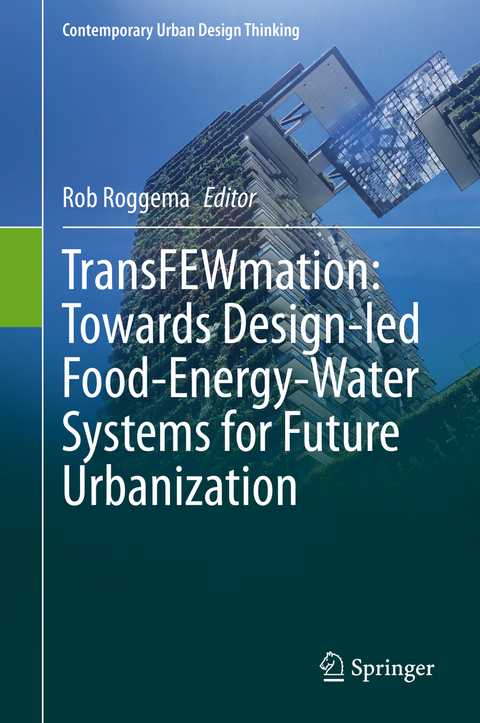
TransFEWmation: Towards Design-led Food-Energy-Water Systems for Future Urbanization
Springer International Publishing (Verlag)
978-3-030-61976-3 (ISBN)
Prof. Dr. ir. Rob Roggema is Professor Spatial Transformations in the Research Centre for the Built Environment 'NoorderRuimte', Hanze University of Applied Sciences in Groningen, the Netherlands. He is Landscape Architect and an international design expert in the field of sustainable urbanism, climate adaptation, energy landscapes and urban agriculture. He held positions at several universities in the Netherlands and Australia, provinces and municipalities, and design firms.
Rob developed the Swarm Planning concept, a dynamic way to design the city, to prepare it for future climate change. Rob's research focuses on the reciprocal city, investigating resilience, adaptation and circularity in urban design. Recent design concepts Rob has conceived are the Double Defence, a proposition for a second row of barrier islands, protecting the Dutch coast against storm surges; the Floodable Landscape for a region under threat of flooding; Bushfire Resilient Bendigo, in which the design anticipates bushfires through creating a protective shield and slowly moving the town away from the fire; the FoodRoofRio, a roof garden with an aquaponic system growing food for the entire family in 'Cantagalo' favela, Rio de Janeiro; and the Sydney Barrier Reef, a refuge for nature fleeing the Great Barrier Reef, which is at risk of disappearing as result of bleeching and simultaneously protects the highly valued real estate of the Sydney coast against future cyclones.
Part 1. Framework.- Chapter 1 The Moveable Nexus, Transforming Thinking on Cities.- Chapter 2 A moveable Nexus: framework for food-energy-water design and planning.- Chapter 3 M-NEX methodology: a design-led approach to the FEW-Nexus.- Part II Design for food in M-Nex.- Chapter 4 Nature driven planning for the FEW-Nexus in Western Sydney.- Chapter 5 The flexible scaffold: design praxis in the FEW-nexus.- Chapter 6 Spatialised method for analysing the impact of food.- Chapter 7 Synergetic planning and designing with urban FEW-flows: lessons from Rotterdam Nico Tillie.-Chapter 8 Le Fouture de Groningen; towards transformational food-positive landscapes.- Chapter 9 Mapping the FEW-Nexus across cascading scales: contexts for Detroit from region to city.- Chapter 10 Redesigning the Urban Food Life through the Participatory Living Lab Platform - Practices in Suburban Areas of the Tokyo Metropolitan Region.-Chapter 11 The Regenerative City - positive opportunities of coupling urban energy transition with added values to people and environment.- Chapter 12 Pig farming vs. Solar farming: exploring novel opportunities for the energy transition.- Chapter 13 Proposal for a database of food-energy-water-nexus projects.- Chapter 14 Linking urban food system and environmental sustainability for the resilience of the cities: the case of Tokyo.- Chapter 15 TransFEWmotion: designing urban metabolism as an M-NEX.- Index.
| Erscheinungsdatum | 29.01.2021 |
|---|---|
| Reihe/Serie | Contemporary Urban Design Thinking |
| Zusatzinfo | XX, 342 p. 185 illus., 131 illus. in color. |
| Verlagsort | Cham |
| Sprache | englisch |
| Maße | 155 x 235 mm |
| Gewicht | 731 g |
| Themenwelt | Naturwissenschaften ► Geowissenschaften ► Geologie |
| Schlagworte | Food-Energy-Water nexus • Planning for Food, Energy and Water • Regenerative Landscape • Urban Design • Urbanism and Sustainable Cities |
| ISBN-10 | 3-030-61976-1 / 3030619761 |
| ISBN-13 | 978-3-030-61976-3 / 9783030619763 |
| Zustand | Neuware |
| Haben Sie eine Frage zum Produkt? |
aus dem Bereich


